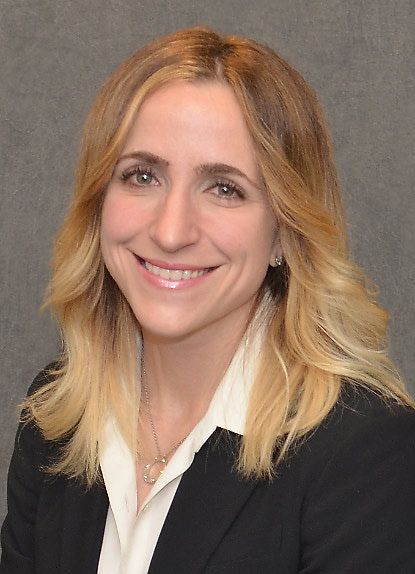Article
Exploring collagen cross-linking as a treatment for keratoconus
Author(s):
Kathryn M. Hatch, MD, details how collagen CXL is evolving with the goals of reducing complications and actually improving visual acuity.

Hatch

Reviewed by Kathryn M. Hatch, MD
Collagen cross-linking (CXL) is a revolutionary sight-preserving treatment for keratoconus because of its strengths, from strengthening of the corneal biomechanics, increasing tensile strength of the collagen fibrils, slight flattening and corneal thinning to stabilizing of the corneal curvature, which may prevent further corneal steepening.
The procedure is evolving with the goals of reducing complications and actually improving visual acuity, according to Kathryn M. Hatch, MD, assistant professor of Ophthalmology at Harvard Medical School, and director of refractive surgery at Mass Eye and Ear in Boston.
The Dresden Protocol, which the FDA approved in 2016, is the classic epithelial-Off (EPI-Off) technique.
The procedure involves removal of the epithelium and soaking the cornea and anterior chamber with dextran-based 0.1% riboflavin; ultraviolet (UV) A light then is delivered to the eye for 30 minutes.
Transepithelial CXL is an off-label technique that is not yet been FDA approved. The EPI-On procedure is on the horizon and currently being evaluated in clinical trials.
Hatch explained that while CXL generally carries a low risk with uneventful recovery, the patients require continued monitoring and should expect to wear their visual aids, including contact lenses or glasses, after the procedure.
Complications of the EPI-Off procedure can be vision threatening, are technique-dependent, and most are related to the removal of the epithelium.
The complications include pain, keratitis (punctate/infectious/diffuse lamellar), poor vision, corneal haze or opacification, delayed epithelial healing or a persistent epithelial defect, corneal melt endothelial cell damage or decompensation, progression of keratoconus, or hydrops.
EPI-ON US clinical trials
Glaukos conducted a study of the role of oxygen in EPI-On CXL. In ex vivo porcine corneas, the oxygen concentration in the stroma was measured before, during, and after application of UV light.
The study showed that the epithelium blocks oxygen and drug diffusion, resulting in decreased efficiency.
Laboratory studies showed that supplemental oxygen enabled sustained aerobic CXL under high-irradiance UV delivery, which, Hatch explained, drives increased reaction efficiency compared with alternative approaches via aerobic photochemistry.
In a phase III pivotal trial of Glaukos EPI-On CXL therapy, the procedure halted or reduced the progression of keratoconus in 189 eyes compared with observed progression in a placebo arm that included 90 eyes.
The primary end point was a difference of 1 diopter or more between the treatment groups in the mean change in Kmax from baseline at 6 months after treatment.
The treatment was well tolerated, with most adverse events mild and transient.
CXL Ophthalmics (CXLO) has conducted a large phase 2 study that included 1922 eyes of 2258 patients.
EPI-On CXL was performed using the EpiSmart procedure, which includes EpiPrep applicators to enhance permeability without disrupting the epithelium; a RiboStat Drug, which is a 0.5% riboflavin concentration that optimizes in vivo oxygen use; and a UVX-3000 device that provides optimal light cycling for oxygen recovery between pulses.
The study had 3 treatment groups that involved application of 4 mW/cm2 peak for 20 minutes, 6 mW/cm2 peak for 20 minutes, and 4 mW/cm2 peak for 30 minutes.
The results showed significant improvements in the corrected distance visual acuity and uncorrected distance visual acuity from baseline with all three doses tested.
The procedure was well tolerated with minimal adverse events.
A phase 3 trial should begin soon.
“With EPI-On the horizon, the procedure will ultimately be additive to other treatments such as Intacs (Addition Technology, Inc.) and topography-guided photorefractive keratectomy,” Hatch concluded “The goal for patients with keratoconus is not only stabilization but hopefully visual rehabilitation, possibly with future additive technologies and alternative techniques of CXL which will be welcomed into our armamentarium in the treatment of keratoconus.”
See more ASCRS coverage
---
Kathryn M. Hatch, MD
E: Kathryn_hatch@meei.harvard.edu
This article is adapted from Dr. Hatch’s presentation at the American Society of Cataract and Refractive Surgery 2021 annual meeting in las Vegas. Her relevant disclosures include Glaukos and CXLO.
Newsletter
Don’t miss out—get Ophthalmology Times updates on the latest clinical advancements and expert interviews, straight to your inbox.




